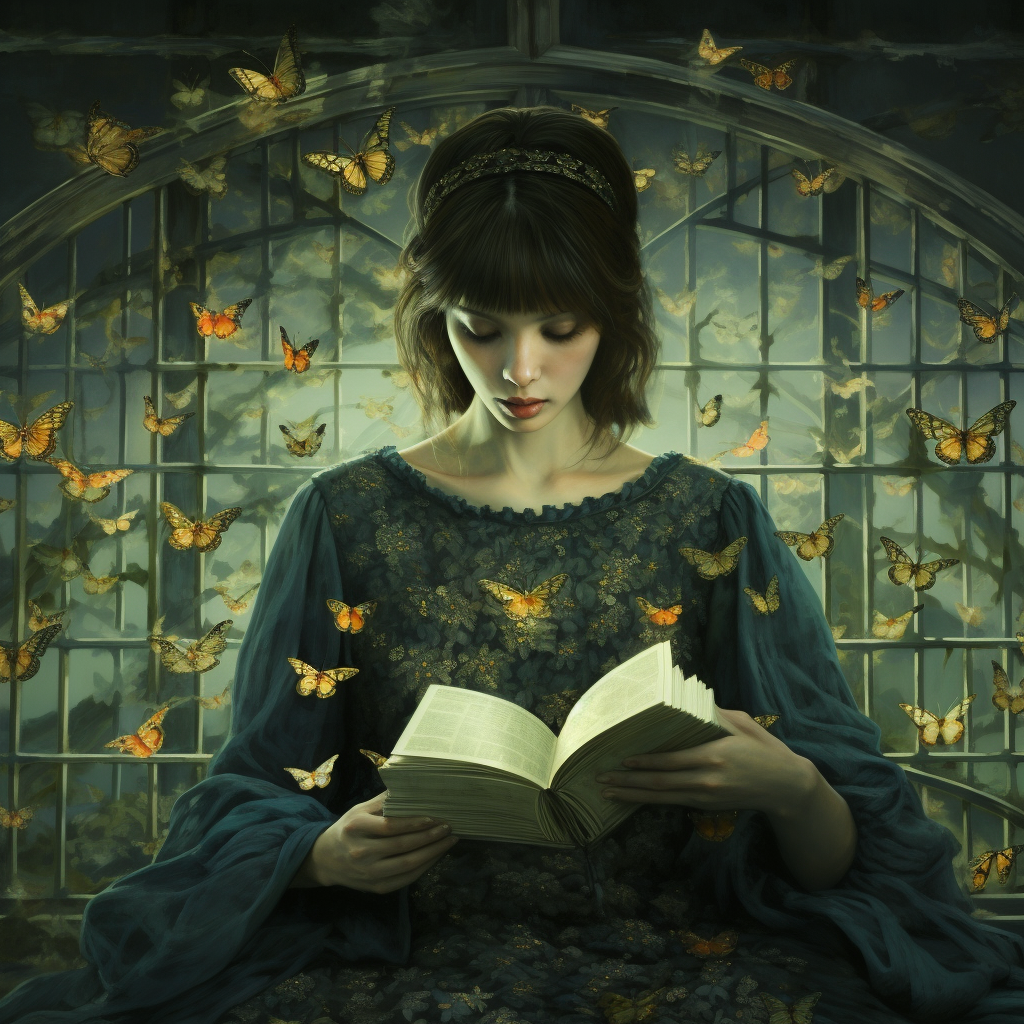
When you step into the enchanting world of poetry, you might find yourself wondering what is a single line of poetry called? Poetry, like a painter’s palette or a composer’s notes, has its own set of rules and terminology. In this poetic journey, we’ll explore the answer to the question: What is a single line of poetry called? Let’s dive into the lyrical realm of verse and unravel the mysteries of poetic terminology.
The Terminology of Poetry

Before we embark on our quest to discover what a single line of poetry is called, let’s first familiarize ourselves with the rich tapestry of poetic terminology. Poetry is like a language of its own, complete with unique words and concepts that add depth and beauty to its verses. Understanding these terms is akin to learning the vocabulary of a new world.
Poetry: A Language of Emotion
Poetry is the language of emotions, thoughts, and dreams, and it often employs figurative language, vivid imagery, and rhythmic patterns to convey meaning in a condensed form. It’s a medium where words transform into brushstrokes on the canvas of the soul.
Poetic Lines: The Building Blocks
In poetry, lines are the building blocks of verses. They’re like the bricks in a towering structure or the stitches in a quilt, each contributing to the overall design and impact of the poem. But what about a single line—a poetic utterance so brief it stands alone?
What is a Single Line of Poetry Called? Exploring the Monostich

Now, let’s dive into the world of single lines in poetry, often referred to as “monostiches.” The term “monostich” is derived from the Greek words “mono” (meaning “single”) and “stichos” (meaning “line” or “verse”). Essentially, a monostich is a single-line poem or a verse that stands on its own, like a solitary star in the night sky.
The Origins of Monostiches
Monostiches have a long history in poetry, with roots stretching back to ancient times. They were favored by early poets who sought to capture profound thoughts or emotions in a single striking line. These concise gems were celebrated for their ability to convey powerful messages with brevity and precision.
Characteristics of Monostiches
Monostiches possess distinct characteristics that set them apart from longer poetic forms:
- Conciseness: Monostiches are incredibly concise, containing just one line. This brevity challenges poets to distill their thoughts to their essence.
- Emotional Impact: Despite their brevity, monostiches aim to pack an emotional punch. They often explore deep feelings, observations, or reflections.
- Independence: Monostiches can stand alone as complete poems. They don’t rely on additional lines for context or meaning.
- Memorability: The succinct nature of monostiches makes them memorable, allowing their words to linger in the minds of readers.
Monostiches vs. Longer Forms
To appreciate the beauty of monostiches, it’s essential to understand how they differ from longer poetic forms. While longer poems offer space for intricate narratives and extended metaphors, monostiches are like exquisite miniatures—small yet captivating.
In longer poems, lines often work together to build themes and stories, whereas monostiches shine as singular, self-contained expressions. This distinctiveness makes them valuable tools in a poet’s repertoire.
Crafting a Captivating Monostich

Creating a compelling monostich requires precision and artistry. It’s akin to crafting a delicate piece of jewelry where every facet must shine. Here are some tips and techniques for crafting your monostich masterpiece:
1. Be Concise, Be Powerful
In monostiches, brevity is your ally. Every word must carry weight and meaning. Think of it as sculpting a tiny but exquisite figurine from a single piece of marble. Each chip of the chisel must contribute to the final form.
2. Evoke Emotion
Monostiches thrive on emotion. They are the teardrop in the eye of a portrait, the whispered secret in a crowded room. Use vivid imagery and evocative language to stir the reader’s feelings in a single line.
3. Experiment with Form
While monostiches traditionally consist of one line, don’t be afraid to experiment with variations. You can explore different syllable counts, rhyme schemes, or even line breaks within your monostich. The key is to maintain the essence of brevity and impact.
4. Precision is Key
In a monostich, every word, every syllable, counts. Like a watchmaker crafting a miniature timepiece, be meticulous in your choice of words. Ensure that each contributes to the overall effect you wish to achieve.
5. Capture the Essence
Monostiches are often snapshots of a moment, capturing the essence of an experience or emotion. Think of it as taking a single photograph that encapsulates an entire story. Your monostich should transport readers to a specific time and place, even if just for a moment.
The Significance of Monostiches

Monostiches hold a special place in the world of poetry for several reasons:
1. Purity of Expression
A monostich is a pure distillation
of poetic expression. It’s like sipping a shot of espresso—a concentrated burst of flavor that leaves a lasting impression. This purity allows poets to convey profound thoughts or emotions with remarkable clarity.
2. Moments of Reflection
Monostiches serve as moments of reflection and contemplation. They are the brief pauses in the symphony of longer poems, inviting readers to pause and absorb the depth of a single thought. In a world filled with noise and distractions, monostiches offer moments of stillness.
3. Versatility
Monostiches are versatile poetic tools. They can be used as standalone poems, epigraphs, or even as striking lines within longer works. Their ability to stand independently while complementing larger narratives is a testament to their flexibility.
Monostiches: Where a Universe Resides in a Single Line

In the world of poetry, a single line can be a universe unto itself. Monostiches, with their concise power and profound impact, remind us that poetry’s beauty often lies in its brevity. They are the stars in the poetic night sky, each one a brilliant point of light, collectively painting a picture of our human experience.
As you explore the realm of monostiches, remember that even in the space of a single line, you can create galaxies of emotion, contemplation, and beauty. Embrace the challenge, let your imagination roam freely, and craft monostiches that resonate with the hearts and minds of your readers. In these tiny verses, you may discover a universe of creativity waiting to be explored.
Learn More About Earning Income from Your Poetry
- Publish Poetry Online and Get Paid
- Do you get paid for publishing poetry?
- How can I get my poetry noticed?
- How much should I sell my poetry for?
- How much does it cost to publish poetry?
- Can anybody be a poet?
- What are the 11 rules in writing a poem?
- What is the number one rule of poetry?
- How many lines must a poem have?
- What is a single line of poetry called?
- What is a poem with one line called?
- What is the middle of a poem called?
- Why don’t poets follow grammar rules?
- What is 3 line poetry called?
- What should a poem look like?
- How to write good poems?
Frequently Asked Questions (FAQs)
- What is a single line of poetry called?
- A single line of poetry is often referred to as a “monostich.” It is a standalone verse or poem consisting of just one line.
- Can monostiches convey complex ideas?
- Absolutely. Despite their brevity, monostiches can convey profound and complex ideas. Poets use concise language and vivid imagery to pack a punch in a single line.
- Are monostiches suitable for all themes and emotions?
- Yes, monostiches can explore a wide range of themes and emotions. From love and loss to nature and philosophy, these single lines can capture diverse sentiments.
- How do I start writing monostiches?
- To begin writing monostiches, start by observing the world around you and your own emotions. Choose a theme or idea that resonates with you deeply, and then craft a single line that encapsulates it with precision and emotion.
- Can a monostich be a complete poem?
- Yes, a monostich can stand alone as a complete poem. It doesn’t require additional lines for context or meaning. However, it can also be used within longer poems to create impact.